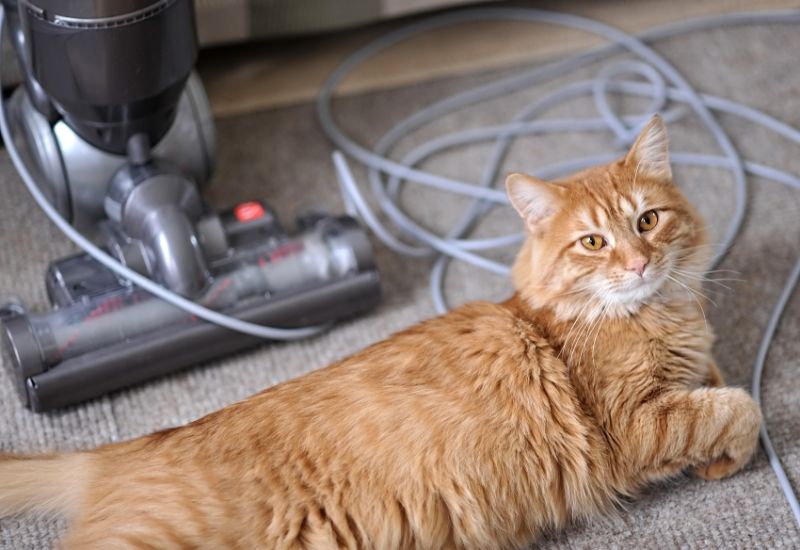
Almost every cat owner is familiar with the hacking and gagging noises cats make (usually at 2 am) as they prepare to cough up a hairball. If you groan when you hear this and wonder if anything can be done about it, True Care Veterinary Hospital has good news for you!
But are you ready to tackle the hairy situation that is hairballs in cats?
How Do Hairballs Happen?
Cats are consummate groomers that work hard to keep their coats immaculate. While grooming themselves with their sharp tongues, cats ingest hair that has been shed. Fur cannot be broken down by the digestive tract, and if it doesn’t pass through, it can collect in the intestine.
Although this hair typically passes through the digestive tract and is excreted in the stool, sometimes it may remain in the stomach and gradually accumulate into a wet clump – the hairball.
Veterinarians call these expelled clumps trichobezoars. Most are not ball shaped at all, but rather elongated due to their voyage from the stomach through the esophagus.
Due to lack of grooming experience, young cats and kittens are less likely to develop hairballs than older cats. Long haired cats such as Persians and Maine Coons, as well as especially fastidious groomers, are also more likely to develop hairballs. Hairballs are also more common in the seasons of the year when cats shed their coats.
A Hairy Problem
Hairballs in cats may become a problem in the following scenarios:
- If you’re finding more than two to three a week, it may mean that your cat is grooming excessively. This in turn could indicate a skin problem, parasites, a behavioral concern, or pain. Contact us to schedule an appointment if this is the case.
- If your cat goes through the motions of hacking up a hairball, but nothing emerges, this could also be a sign that something is amiss. Repeated unproductive gagging could mean that a hairball is too large to pass into the intestines, and a blockage could occur.
If you see the following signs in your cat, a veterinary exam is in order:
- Lethargy
- Inappetance
- Weight loss
- Diarrhea
- Vomiting clear or yellowish fluid, or undigested food
Treatment and Prevention of Hairballs in Cats
If hairballs are a problem in your cat, ask us about some simple treatments you can use at home to help your cat feel better. There are gels and treats as well as diets available that can lubricate the digestive tract and and propel hair along, so it ends up in the litter box instead of on your carpet.
If an obstruction is confirmed, the hairball may need to be removed surgically.
Preventing hairballs in cats relies on a few simple tools:
Brush your cat daily. Regular grooming removes the dead hair onto a brush, instead of into your cat. This alone can help prevent or reduce hairball problems.
Keep your cat hydrated. Encouraging your cat to drink enough water will help keep their intestinal tract lubricated and running smoothly.
Feed a high quality diet. Feeding a high protein, balanced diet will keep your cat’s digestion on track and reduce the likelihood of hairballs.
Use a hairball remedy once or twice a week. These laxatives are usually petroleum based and can offer your kitty some relief.
If you have concerns or questions about hairballs in cats, please give us a call.

